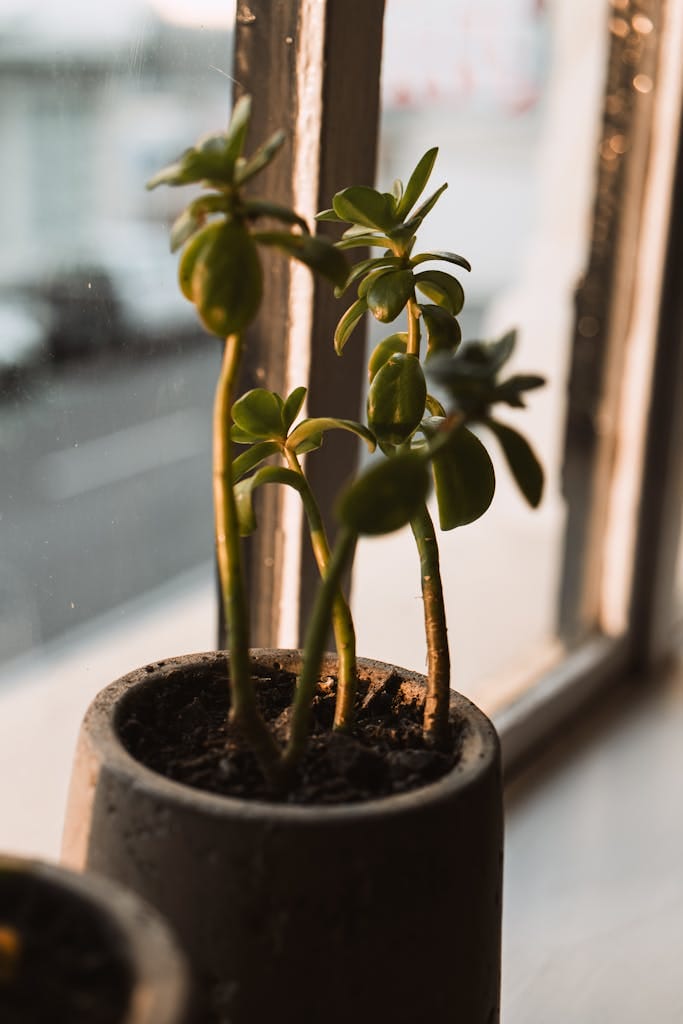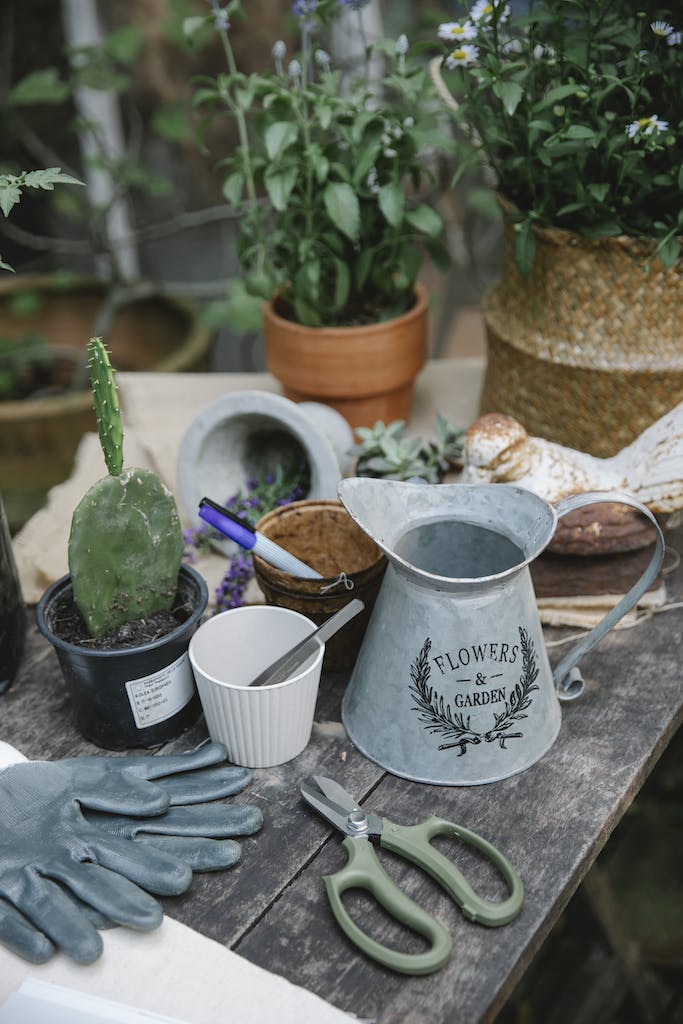What To Plant With Heuchera: Best Companion Plants For Coral Bells
The allure of Heucheras, commonly known as Coral Bells, has totally captivated me. Their bright hues and distinctive forms inject a burst of vitality into any garden. Nonetheless, I often find myself deliberating over which plants would best complement them when thinking about Heucheras’ maintenance.
Let me guide you through some fantastic companion options. From Hostas or Plantain Lilies and Ferns to Astilbe or False Goat’s Beard and Evergreens, we’ll explore how to create year-round appeal with Heuchera.
Let’s get our hands dirty and craft the perfect perennial blend together!
Key Takeaways
- Heuchera plants have versatile foliage in various shades and can tolerate different weather conditions.
- They thrive in full sun or partial shade and prefer well-drained, fertile, moist soil.
- Planting it in your garden brings visual interest, complements other plants in partial shade, and offers year-round attractiveness with low maintenance.
- It can be paired with companion plants such as hostas, ferns, Astilbe, and evergreen plants for a visually stunning and captivating garden.
Understanding Heuchera: Uncover the Magic of “Coral Bells”

Let’s get to know Heuchera, also known as ‘Coral Bells or Alumroot,’ better. We’ll first look at the characteristics that make these plants unique, then move on to the ideal conditions for their growth.
Lastly, I’ll show you the benefits of adding these magical beauties to your garden.
Characteristics of Heuchera Plants
I often marvel at the versatile characteristics of Alumroot plants, commonly known as ‘Coral Bells.’ With their stunning foliage in shades ranging from purples to greens, they genuinely make a statement.
The plant’s robust nature makes it a suitable candidate to plant with coral bells. Its ability to withstand various weather conditions is noteworthy.
You can grow coral bells in full sun or partial to full shade, and they’ll still thrive beautifully. They’re also deer-resistant, which is a bonus for gardeners. The coral bell plant, with its attractive, bell-shaped flowers, is also a great attractor of hummingbirds. Many ornamental plants can be planted next to your coral bells for a stunning garden display.
Its characteristics make it an exceptional choice for adding depth and color to any garden space. They pair well with coral bells and many other garden plants. There are many varieties of coral bells available, and they also grow easy to grow and maintain as they are easy to grow.
Some species of coral bells can even grow taller than the average coral bells, adding a dynamic element to your garden.
Ideal Growing Conditions for Heuchera
In understanding Alumroot, it’s critical to delve into the ideal growing conditions for these plants, and in doing so, we’ll uncover the magic of “Coral Bells.” This perennial plant thrives in partial shade and moist soil.
Here’s a table breaking down its ideal growing conditions:
| Factor | Ideal Condition | Ideal Condition | Reason |
| Light | Partial shade | Its leaves can burn in full sunlight. |
| Soil | Well-drained, fertile, moist | Its roots rot in waterlogged soil. |
| pH | Neutral to slightly acidic | It can tolerate a range of soil pH but prefers slight acidity. |
| Watering | Regular, avoiding waterlogging | It needs moist soil but can’t tolerate waterlogged conditions. |
Understanding these factors is key to cultivating a thriving plant and bringing out its vibrant beauty.
Benefits of Planting Heuchera in Your Garden
Why wouldn’t you want to plant Alumroot in your garden, and what are the benefits of incorporating this vibrant perennial into your outdoor space?
The benefits of planting it are numerous:
- Coral bells bring visual interest to your garden with stunning foliage and delicate flowers.
- They’re perfect companion plants for Alumroot, complementing other plants that prefer partial shade.
- They’re tough and adaptable, offering year-round attractiveness. Coral bells also grow well in partial shade.
- They’re low maintenance, needing only occasional watering once established.
Imagine your garden teeming with these vibrant plants that grow, creating a captivating display of colors, textures, and shapes.
It is the perfect addition to any garden, adding a magic touch with its unique beauty. Lungworts and coral bells, depending on the plant variety, can be planted together, and these plants would make a stunning combination.
If you’re looking for plants to grow alongside your Alumroot, consider iris plants or other annual plants to enhance the overall appeal of your garden. Coral bells grow well in partial shadow, which makes them suitable for various garden settings.
Hostas & Ferns: Why They Make Perfect Partners for Heucheras

Let’s take a moment to consider the pairing of Heuchera with Plantain Lily and Ferns. Their visual contrast creates an appealing aesthetic, and they love shady conditions. In particular, we will highlight how the Japanese Painted Fern can be showcased with it.
Visual Contrast Between Plantain Lily/Ferns and Heuchera
I’ve observed that the visual contrast between Plantain Lilies or Ferns and Alumroot enhances the beauty of your garden. These are perfect companion plants for coral bells due to their striking differences.
- Plantain Lily has broad, bold leaves that offset the delicate and colorful foliage of Alumroot. They create a dynamic visual contrast with their contrasting shapes and textures.
- Ferns bring an ethereal quality with their fine-textured, feathery fronds. They provide a perfect backdrop for the vibrant Alumroot.
- Heuchera’s bright, bell-shaped flowers rise above their foliage, providing a punch of color against the softer greens of the Plantain Lily and Ferns.
- Visual contrast is critical in creating interest in the garden. Pairing it with Plantain Lily and Ferns creates a tapestry of colors and textures that’s visually stimulating.
Complementary Growth Conditions (Shade-Loving)
In this section, I will explore the shared love of early spring that makes Plantain Lily and vascular plants such perfect partners for Heucheras in the garden.
By nature, Alumroots prefer flowering plants and early spring growing conditions similar to Plantain Lily and vascular plants, making them an ideal companion plant. All three are perennial plants that produce beautiful foliage year after year, providing continuity in your garden.
The shadow is their preferred environment, where they can truly thrive. This shared characteristic is what makes them such a good match. They complement each other’s growth to create an aesthetically pleasing, shade-loving trio in your garden.
Understanding these growth conditions is critical to creating a harmonious, balanced garden filled with lush, healthy plants.
Coral bells are beautiful plants that thrive in the shadow, and they can grow taller than coral bells when planted alongside Plantain Lily and vascular plants.
These plants may also prefer the foliage of coral bells and thrive in the shadow of coral bells without overshadowing them.
Showcasing the Japanese Painted Fern with Heuchera
I’m now focusing on two key players in the shade garden: the Japanese-painted vascular plants and Alumroot. I’ll show you why they make such a stunning pair. Showcasing the vascular plants with it creates a visual feast in your garden that’s hard to beat.
- The silver-grey foliage provides a stark contrast to the vibrant leaves of the Alumroot, making them perfect companions.
- Both plants thrive under similar growing conditions, preferring shadiness and moist, well-drained soil.
- Its delicate fronds playfully dance around the robust, plant coral bells.
- The unique textures of both plants add depth and interest to your garden.
This combination not only looks fabulous but also ensures that both plants will thrive side by side.
Highlighting Heucheras with Astilbe: A Shimmering Shade Duo

Pairing Alumroot with False Goat’s Beard creates a visually stunning shade garden. They both thrive in the same conditions – shadow and well-drained soil, which makes them ideal partners.
The contrast between False Goat’s Beard’s feathery plumes and Alumroot’s round form adds an interesting texture. At the same time, their vibrant colors make your garden pop.
Similar Growth Requirements: Shade and Well-Drained Soil
I’ve found that the False Goat’s Beard makes a remarkable partner for Heucheras, as they both thrive in shady areas and prefer well-drained soil. Their similar growing requirements make them a perfect pair for any shade garden.
Imagine its vibrant, feathery plumes, creating a lively contrast against the rounded, ruffled leaves of the Alumroot.
Picture its bright blooms in shades of pink, red, purple, and white, enhancing the rich hues of the Alumroot’s foliage. Visualize the Alumroot belonging comfortably under the dappled shadow of a large tree, with False Goat’s Beard nestled nearby.
Envision the well-drained soil, a haven for these two plants, providing the perfect environment for them to flourish.
Astilbe’s Feathery Plumes Versus Heuchera’s Round, Mounded Form
In my garden, amidst the shade and foliage, I’ve seen the feathery plumes of Astilbe stand out beautifully against the round, mounded form of Alumroot, and it’s truly a sight to behold.
When considering what to plant with Alumroot, Astilbe’s contrast is a fantastic choice. The ethereal, feathery plumes of Astilbe, with their diverse color palette, offer a striking contrast to Alumroot’s round, mounded form, creating a dynamic visual display that enhances the charm of any garden.
Moreover, these two plants complement each other well, not only aesthetically but also in terms of their care requirements.
Vibrant Color Combinations for a Visually Stunning Shade Garden
I will share some vibrant color combinations for a visually stunning shade garden and how the shimmering shade duo of Alumroots and Astilbe can genuinely make your garden pop.
Consider these combinations as you decide what to plant with Alumroot:
- ‘Coral Bells’ with ‘Bridal Veil’ Astilbe for a blend of coral and white.
- ‘Blackout’ with ‘Vision in Pink’ Astilbe for a bold contrast.
- ‘Lime Marmalade’ with ‘Purple Candles’ Astilbe to create a cool, refreshing palette.
- ‘Forever Purple’ with ‘Fanal’ Astilbe for a rich, deep color scheme.
Evergreen Companions: Year-round Appeal with Heuchera

Now, let’s talk about evergreen companions that can bring out the best in Heuchera all year round. We’ll explore pairings that not only last but also add interest during the winter months. We’ll also touch on how these companions can enhance their winter color transformation.
Long-lasting Impact with Evergreen Companion Plants
Let’s explore how one can create a year-round visual appeal by pairing Heuchera with certain year-round companion plants. The key here is understanding what to plant with it to achieve a long-lasting impact.
- Boxwood (Buxus): This year-round companion plant grows best in full sun or partial shadow. Its glossy, dark leaves offer a stunning contrast against the vibrant Alumroot.
- Japanese Holly (Ilex crenata): Its small, glossy leaves provide an elegant backdrop for Alumroot’s bold foliage.
- Dwarf Conifers: These plant species add height and texture, complementing Heuchera’s low-growing habit.
- Blue Star Juniper (Juniperus squamata’ Blue Star’): The blue-green foliage of this year-round companion plant provides a vibrant color contrast, enhancing Alumroot’s visual appeal.
Choose wisely, and your garden will be an eye-catching spectacle all year round.
Pairings that Offer Winter Interest
Often, pairing Heuchera with evergreen plants provides a captivating visual appeal throughout the harsh winter months. If you’re looking for companions for your coral bells, consider hellebores.
Known as Christmas roses, hellebores, and coral bells make an enchanting duo in the garden. They thrive in similar conditions, from partial shadow to full sun, and their contrasting textures create a striking display.
Evergreens, like boxwoods or junipers, also make excellent companion plants for coral. Their rich greenery offers a stark contrast to the vibrant hues of its leaves, adding depth and interest to your garden all year long.
Companion Plants that Complement Heuchera’s Winter Color Change
I’m noticing that selecting evergreen companions for Heuchera and coordinating them with its winter color change creates a garden display that maintains its appeal all year round. These companion plants that complement its winter color change have exciting textures and contrasting colors that set off the varying hues of the species and varieties of coral bells.
In your coral bell garden, consider these:
- Blue Spruce: Its silvery-blue needles contrast vividly with Alumroot’s winter tones.
- Holly: Its glossy, dark green leaves and bright red berries highlight the subtle changes in Alumroot.
- Boxwood: Its dense, green foliage provides a steady backdrop for the ever-changing Alumroot.
- Yew: Its rich, dark green needles offer a striking contrast to the bronze and burgundy tones of winter Alumroot.
These evergreens ensure your garden’s year-round appeal.
Crafting the Perfect Blend with Perennials: Artful Companion Planting Ideas

I’m excited to guide you through the artful process of crafting the perfect blend with perennials.
We’ll explore how to sync light needs and bloom times for the ideal companions. I’ll share some successful examples of perennial-heuchera combinations.
We’ll discover how to arrange your garden for the most appealing texture, depth, and color harmony.
Light Needs and Bloom Times: Syncing the Perfect Perennial Companions
Let’s dive into how to sync the perfect perennial companions by understanding their light needs and bloom times, which is crucial to crafting the perfect blend with your perennials. It’s essential to select plants that have similar growing conditions. For instance, Alumroot thrives in full sun and partial shadow.
Now, let’s visualize the best companion plants for coral bells:
- Echinacea: Offers a contrasting texture while matching the light needs and bloom times.
- Hostas: Provides a lush green contrast, tolerating the same light conditions.
- Astilbe: Showcases feathery plumes when heuchera’s flowers fade.
- Ferns: Add a delicate texture and thrive in similar shadow conditions.
Showcasing Examples of Successful Perennial-Heuchera Combinations
I’ve observed some incredibly successful perennial-heuchera combinations, and I’m excited to share these artful companion planting ideas with you.
One of the best companion plants for your coral bells is the Astilbe. Its plume-like flowers create a captivating contrast with Alumroot’s rounded leaves.
Another fantastic pairing is the Hosta. Their broad leaves beautifully complement the more delicate foliage of the Alumroot.
Vascular plants, too, with their feathery fronds, make excellent companions for coral bells, adding texture and depth to your garden.
These are just some examples of what to plant with it. Remember, showcasing examples of successful combinations is an art. Like all art, it requires a keen eye, patience, and passion.
How to Arrange Your Garden for Texture, Depth and Color Harmony
So, now we’re moving on to how you can arrange your garden to blend texture, depth, and color harmony with your perennials and Heuchera. Here’s a trick: Think about your garden as a living painting, where each plant represents a unique color or brushstroke.
- Coral bell foliage, with its vibrant hues, can act as your base color.
- Excellent companion plants like hostas or vascular plants can provide contrasting texture and depth.
- Positioning taller perennials behind your plant can add an absorbing visual layer.
- Lastly, don’t be afraid to experiment! After all, discovering what to plant with it is part of the fun.
Conclusion
So there you have it! Planting heucheras alongside hostas, vascular plants, and astilbes creates a dynamic, visually appealing garden. They’re ideal for providing year-round color, especially when paired with evergreens.
Remember to experiment with other perennials for a uniquely artful blend. Remember, the magic of gardening lies in the creativity and joy it brings, so don’t be afraid to try new combinations.
Happy planting!
Frequently Asked Questions
What Kind of Soil Conditions Do Heucheras Prefer?
In my experience, Alumroot prefers well-drained, fertile soil. They’re not picky about pH, but they do best in neutral to slightly acidic conditions. They’re also partial to organic matter, like compost or leaf mold.
How Often Should You Water Heucheras?
In my gardening experience, I’ve found that it doesn’t only like to dry out partially. I usually water them about once a week, but it depends on the weather and soil conditions.
Are There Any Common Pests or Diseases That Affect Heucheras?
They can be affected by pests like vine weevils and diseases such as rust or powdery mildew. I’ve found regular observation and prompt treatment help keep these issues under control.
Can Heucheras Be Grown in Containers?
I’ve successfully grown it in containers. They’re pretty adaptable and thrive well in pots. Just ensure they’ve good drainage, and you’re set. They make a fabulous centerpiece in a mixed container garden.
How Do You Propagate Heucheras?
I propagate it by cutting a healthy leaf, dipping it in rooting hormone, then planting it in potting soil. I keep it moist and in indirect light until roots develop. It’s not too difficult.







